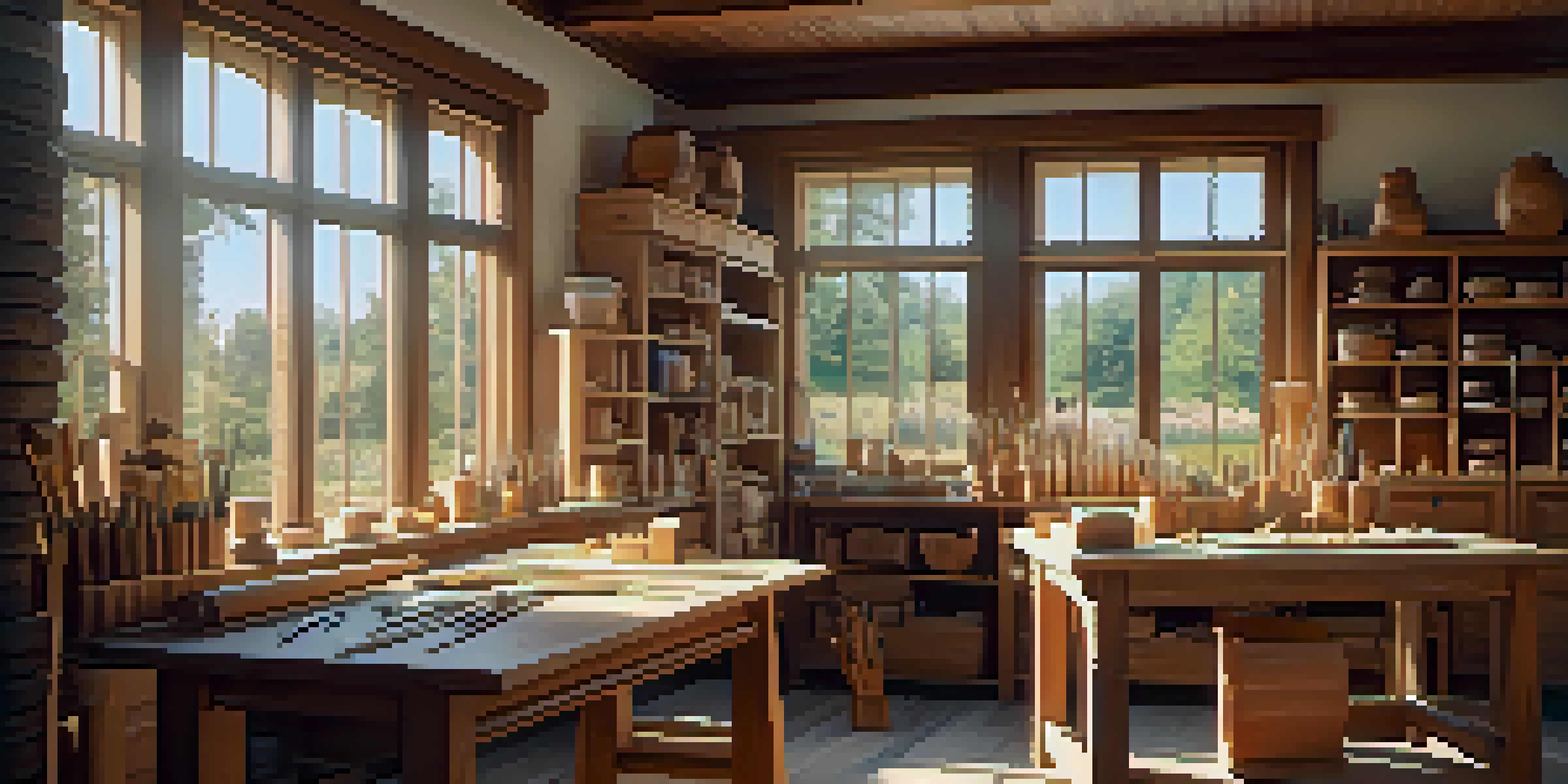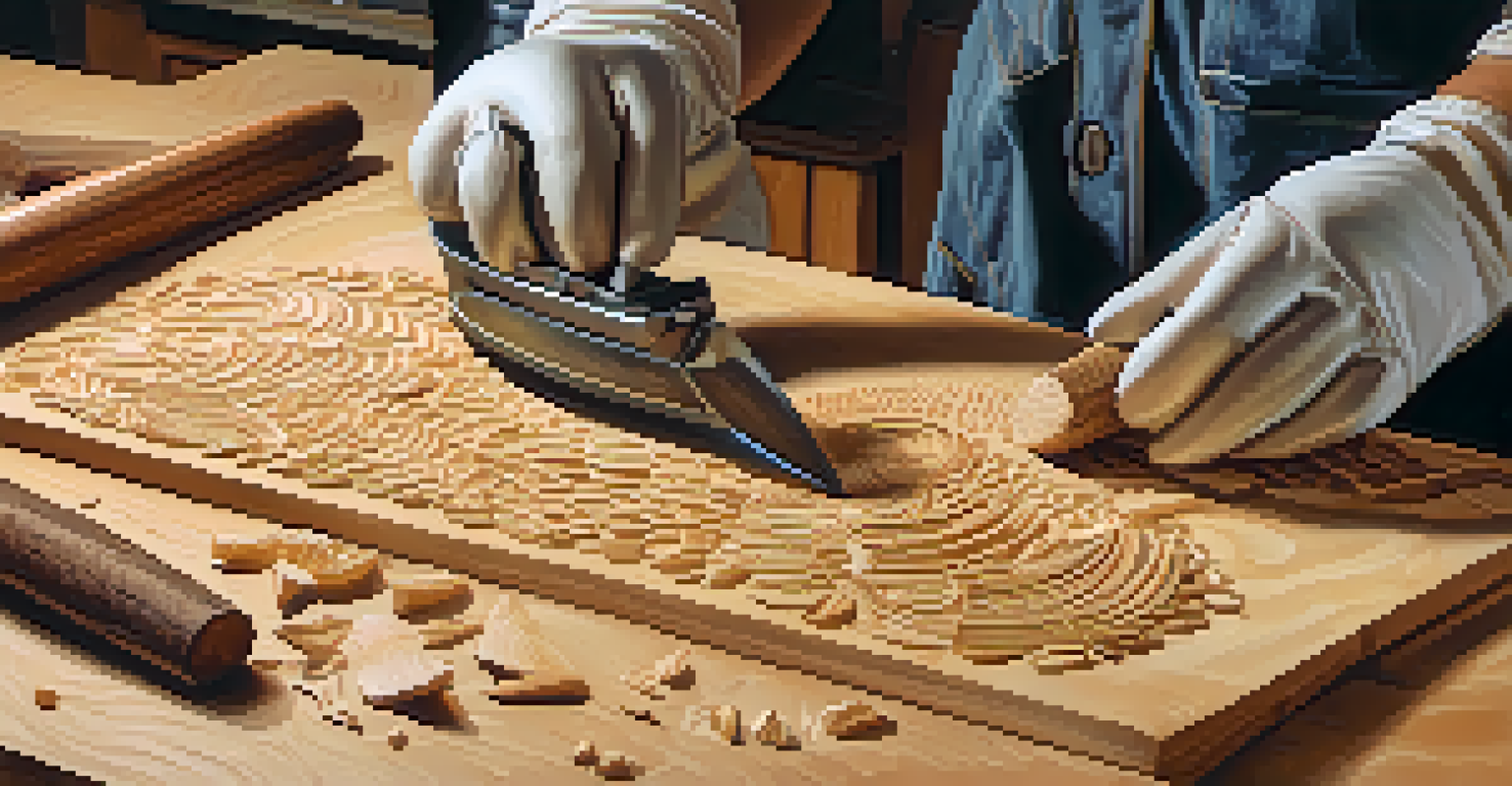Safety Tips for Beginner Carvers: Stay Safe While Creating

Understanding the Basics of Carving Safety
Before you dive into the world of carving, it's essential to familiarize yourself with the basic safety principles. Carving involves sharp tools and can pose risks, so understanding these principles will help you stay safe. Think of it like learning the rules of the road before you get behind the wheel.
Safety isn't just a slogan, it's a way of life.
Beginner carvers should always prioritize their safety by using the right tools for their skill level. This means starting with beginner-friendly tools that offer more control and stability. Just as you wouldn't start driving in a sports car, you want to ensure your first carving experience is with manageable equipment.
Additionally, don't underestimate the importance of a tidy workspace. A clean and organized area reduces distractions and minimizes the risk of accidents. Picture this: trying to cook in a cluttered kitchen; it can lead to mishaps. The same logic applies to carving.
Choosing the Right Tools for Your Skill Level
Selecting the appropriate carving tools is crucial for both safety and success. As a beginner, you should start with simple tools like a carving knife or a whittling knife, which can be easier to handle. Think of these tools as your first set of training wheels; they allow you to build confidence without overwhelming you.

Investing in quality tools can significantly enhance your carving experience. Cheap tools may be tempting, but they can be more dangerous as they might break or slip, leading to accidents. It's better to have a few high-quality tools than a drawer full of unreliable ones.
Prioritize Carving Safety First
Understanding basic safety principles and using the right tools can significantly reduce the risks associated with carving.
Lastly, always read the instructions that come with your tools. Just like assembling furniture from a store, understanding how to use your tools properly ensures you’re set up for success. This knowledge forms the backbone of your safe carving practices.
Wearing Protective Gear: A Must for Safety
One of the simplest yet most effective ways to ensure your safety while carving is by wearing protective gear. This includes gloves, safety goggles, and sometimes even an apron. Just as a cyclist wouldn’t ride without a helmet, a carver should equip themselves for protection.
The only real mistake is the one from which we learn nothing.
Cut-resistant gloves are particularly important as they help prevent injuries from accidental slips. While you may think, 'I’m careful enough,' accidents can happen to anyone, and being prepared is key. These gloves act as a safety net, allowing you to focus more on your craft and less on potential mishaps.
Safety goggles protect your eyes from flying debris, which can be a common occurrence during carving. Imagine trying to enjoy a movie with a bee buzzing around; it's distracting! Keeping your eyes safe ensures you can concentrate fully on the beauty of your work.
Mastering the Proper Carving Techniques
Proper carving techniques can significantly reduce the risk of accidents. Always carve away from your body and keep your hands and fingers clear of the cutting path. It’s similar to how you wouldn’t aim a sharp object towards yourself; the same logic applies here.
Utilizing the correct grip and posture can also enhance your control over the tool. A steady hand is your best friend in carving, so make sure you’re comfortable and stable while you work. Think of it like playing a musical instrument; the right posture can make all the difference in your performance.
Use Proper Techniques and Gear
Wearing protective gear and mastering proper carving techniques are essential for preventing accidents and ensuring a safe experience.
Practicing basic techniques on soft materials, like soap or wood scraps, can help you build your skills safely. This way, you can refine your approach without the pressure of creating a masterpiece right away. Remember, practice makes perfect!
Setting Up a Safe Work Environment
Your work environment plays a significant role in your overall safety while carving. Make sure you have a dedicated space that’s well-lit and free from clutter. Just as you wouldn’t want to cook in a dark kitchen, a well-lit area can help you see your work clearly and avoid accidents.
Having a sturdy work surface is equally important. A wobbly table can lead to slips and mishaps, so invest in a solid workbench or table. Picture trying to write on a bumpy surface; it’s frustrating! A stable environment allows you to focus on your carving without distractions.
Lastly, ensure your tools are stored safely when not in use. A designated storage area keeps sharp tools out of reach of children or pets, further enhancing safety. Just like you wouldn’t leave a loaded gun lying around, sharp tools need to be treated with respect.
Taking Breaks to Prevent Fatigue
Fatigue can lead to careless mistakes, which is why taking regular breaks is essential during your carving sessions. Just like you wouldn’t run a marathon without stopping to rest, your hands and mind require breaks to function at their best. This practice helps you stay sharp and focused.
During your breaks, stretch your hands and arms to alleviate tension. This not only helps you relax but also prepares your muscles for more carving. Think of it like warming up before exercising; it sets you up for success and reduces the risk of strain.
Create a Safe Work Environment
A clean, well-lit workspace with sturdy surfaces and proper tool storage enhances safety and focus during carving sessions.
Set a timer to remind yourself to take breaks, especially if you're engrossed in your project. This way, you won’t lose track of time, and your body will thank you later. Staying refreshed will improve both your safety and the quality of your work.
Knowing When to Seek Help or Guidance
As a beginner, it’s essential to recognize when you may need help or guidance. If you’re unsure about a technique or feel uncomfortable with a tool, don’t hesitate to ask for assistance. Think of it like learning to swim; having a coach can make a huge difference in your confidence and safety.
Joining a carving club or community can provide you with valuable resources and support. Engaging with fellow carvers means you can share tips, seek advice, and learn from one another’s experiences. It’s a great way to enhance your skills while ensuring you stay safe.

Lastly, consider taking a class or workshop to learn from experienced carvers. They can teach you proper techniques and safety measures, making your carving journey much smoother. Just as a teacher helps you understand complex subjects, a mentor can guide you through the intricacies of carving.